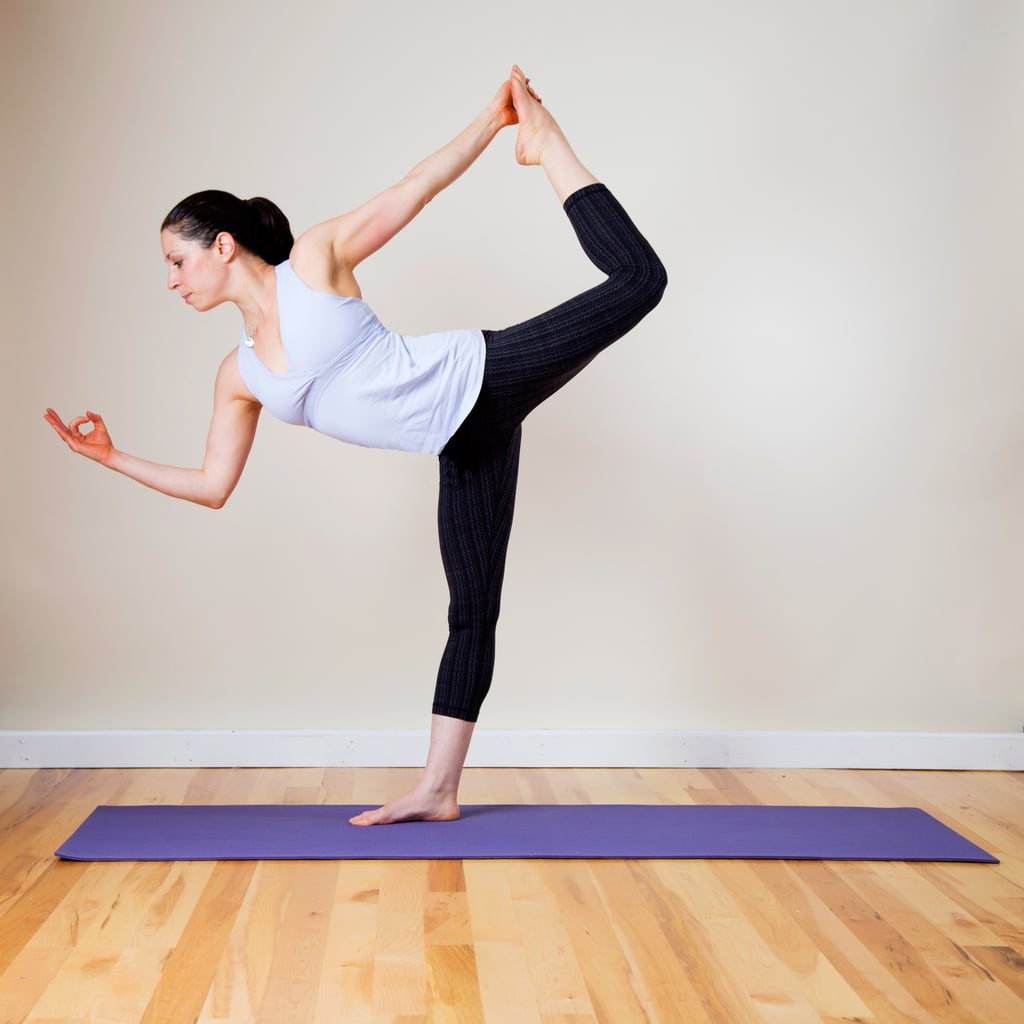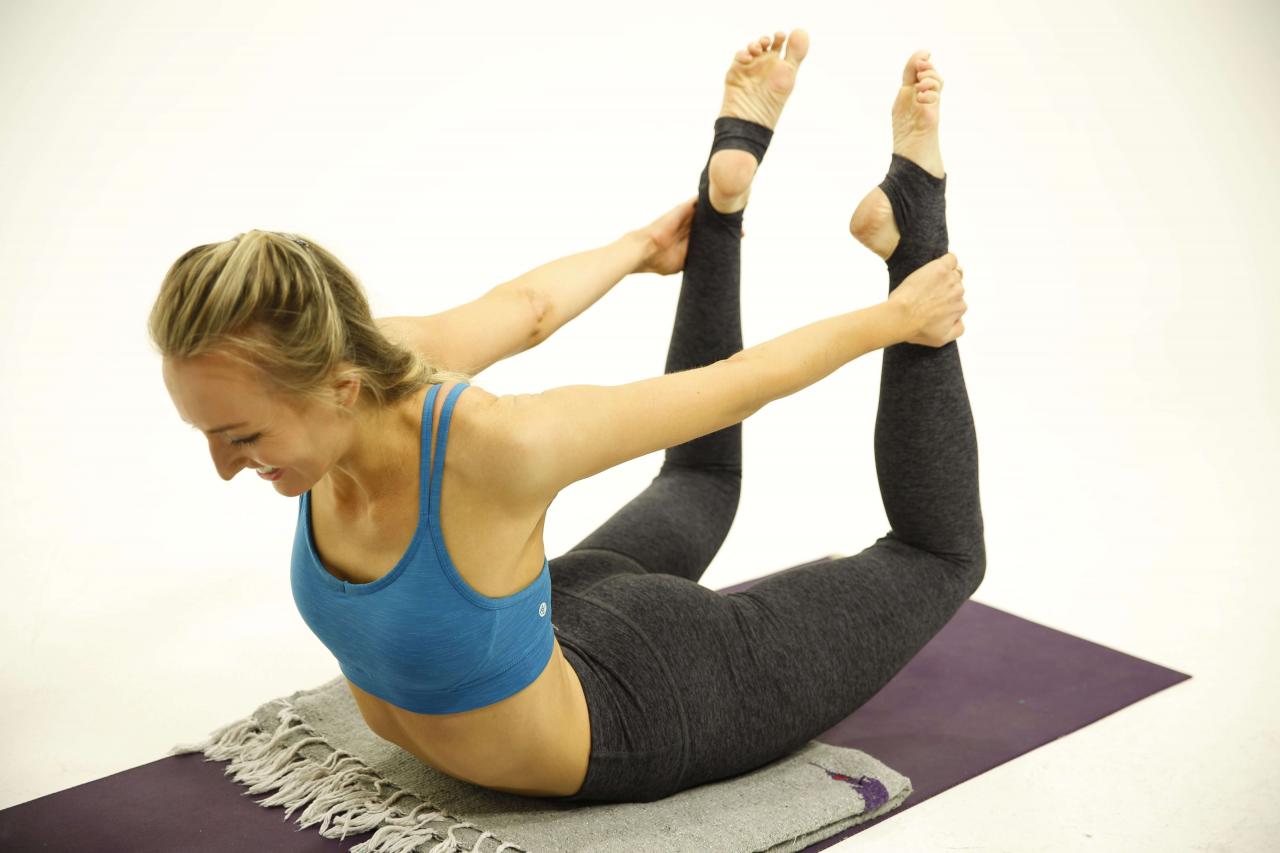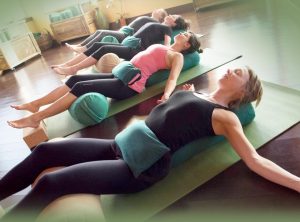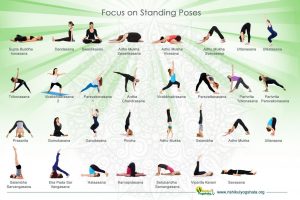
Essential Poses for Flexibility Improvement

Improving flexibility is a journey, not a race. Consistent practice of specific yoga poses can significantly enhance your body’s range of motion, leading to increased comfort, reduced injury risk, and a deeper connection with your physical self. Remember to listen to your body and avoid pushing yourself too hard, especially when starting. Progress takes time and patience.
Essential Yoga Poses for Flexibility
The following table lists ten yoga poses particularly effective for improving flexibility. Each pose targets different muscle groups and joints, contributing to overall suppleness.
| Pose Name (Sanskrit) | Description | Pose Name (Sanskrit) | Description |
|---|---|---|---|
| Adho Mukha Svanasana (Downward-Facing Dog) | A foundational pose that stretches the hamstrings, calves, shoulders, and spine. | Uttanasana (Standing Forward Bend) | Stretches the hamstrings, calves, and hips, promoting relaxation. |
| Trikonasana (Triangle Pose) | Lengthens the hamstrings, groin, and hips, improving balance and stability. | Ardha Chandrasana (Half Moon Pose) | Strengthens legs and core while stretching hips, hamstrings, and spine. |
| Upavistha Konasana (Wide-Legged Forward Bend) | Intense hamstring, groin, and inner thigh stretch. | Baddha Konasana (Bound Angle Pose) | Opens the hips, groin, and inner thighs, promoting relaxation. |
| Paschimottanasana (Seated Forward Bend) | Deep stretch for hamstrings, spine, and shoulders. | Supta Padangusthasana (Reclined Big Toe Pose) | Gentle hamstring and hip flexor stretch. |
| Anjaneyasana (Low Lunge) | Stretches hip flexors, quadriceps, and groin. | Marjaryasana to Bitilasana (Cat-Cow Pose) | Gentle spinal warm-up and stretch, improving flexibility and mobility. |
Detailed Pose Explanations and Execution
Proper form is crucial for maximizing the benefits and minimizing the risk of injury in each pose. Focus on your breath and listen to your body’s signals.
Adho Mukha Svanasana (Downward-Facing Dog): Start on your hands and knees. Lift your hips up and back, forming an inverted V-shape. Pedal out your feet to lengthen your hamstrings. Keep your hands shoulder-width apart and your feet hip-width apart. Engage your core and lengthen your spine.
Uttanasana (Standing Forward Bend): Stand with feet hip-width apart. Bend forward from your hips, keeping your spine long. Let your head hang heavy. Bend your knees slightly if needed to avoid strain on your hamstrings. Engage your core to protect your lower back.
Trikonasana (Triangle Pose): Start standing with feet wide apart. Turn your right foot out 90 degrees and your left foot slightly inward. Bend at your right hip, extending your right arm towards your right leg and your left arm towards the ceiling. Keep your spine straight and gaze towards your left hand.
Ardha Chandrasana (Half Moon Pose): From a standing position, step your feet wide apart. Extend your right leg and bend your left knee. Place your left hand on the floor and extend your right arm towards the ceiling. Engage your core and maintain a straight line from your left hand to your right hand.
Upavistha Konasana (Wide-Legged Forward Bend): Sit with your legs spread wide apart. Extend your spine and bend forward from your hips. Keep your spine long and reach for your toes or ankles.
Baddha Konasana (Bound Angle Pose): Sit with the soles of your feet together. Gently press your knees towards the floor. Hold onto your ankles or feet and sit tall.
Paschimottanasana (Seated Forward Bend): Sit with your legs extended. Bend forward from your hips, keeping your spine long. Reach for your toes or ankles.
Supta Padangusthasana (Reclined Big Toe Pose): Lie on your back. Bend your right knee and bring your right foot towards your groin. Use a strap around your foot if needed to deepen the stretch.
Anjaneyasana (Low Lunge): Start in a plank position. Step your right foot forward between your hands. Lower your left knee to the floor. Extend your torso and arms upward.
Marjaryasana to Bitilasana (Cat-Cow Pose): Start on your hands and knees. Inhale, drop your belly, and lift your chest (Cow Pose). Exhale, round your spine towards the ceiling (Cat Pose). Continue flowing between the two poses.
Beginner-Friendly Yoga Sequence
This sequence is designed for beginners and can be modified to suit individual needs and limitations. Remember to breathe deeply throughout the sequence and hold each pose for 5-10 breaths.
- Child’s Pose (Balasana): 30 seconds
- Cat-Cow Pose (Marjaryasana to Bitilasana): 1 minute
- Downward-Facing Dog (Adho Mukha Svanasana): 1 minute
- Standing Forward Bend (Uttanasana): 30 seconds
- Triangle Pose (Trikonasana): 30 seconds per side
- Low Lunge (Anjaneyasana): 30 seconds per side
- Seated Forward Bend (Paschimottanasana): 1 minute
- Bound Angle Pose (Baddha Konasana): 1 minute
- Reclined Big Toe Pose (Supta Padangusthasana): 30 seconds per side
- Child’s Pose (Balasana): 1 minute
Breathing Techniques and Their Role in Flexibility

Proper breathing, or pranayama, is integral to achieving and maintaining flexibility in yoga. It’s not merely about supplying oxygen to muscles; it’s about coordinating breath with movement to deepen stretches, release tension, and cultivate a mindful connection between body and mind. The rhythmic flow of breath acts as a powerful tool, enabling deeper stretches and promoting a state of relaxation crucial for increasing flexibility.Breathing techniques directly influence the nervous system, impacting muscle relaxation and lengthening.
By consciously controlling the breath, we can regulate the autonomic nervous system, which governs involuntary functions like muscle tension. Deep, controlled breaths activate the parasympathetic nervous system, responsible for the “rest and digest” response, counteracting the sympathetic nervous system’s “fight or flight” response that often contributes to muscle tightness.
Specific Pranayama Techniques for Flexibility
Several pranayama techniques are particularly effective in enhancing flexibility and relaxation. These techniques, when practiced consistently, can significantly improve range of motion and reduce muscle stiffness.
- Ujjayi Breath (Victorious Breath): This breath involves a gentle constriction in the throat, creating a soft oceanic sound as you inhale and exhale. The gentle constriction helps to calm the nervous system and deepen the stretch, promoting relaxation and allowing muscles to release more readily. It’s often used throughout a yoga practice to maintain a calm and focused state.
- Dirga Pranayama (Three-Part Breath): This technique involves filling the lungs completely in three stages: first the lower abdomen, then the rib cage, and finally the upper chest. This deep, full breath oxygenates the body thoroughly, improving circulation and reducing muscle tension. The controlled expansion and contraction of the diaphragm and rib cage promotes a gentle massage of internal organs, aiding in overall relaxation.
- Nadi Shodhana Pranayama (Alternate Nostril Breathing): This technique involves alternately inhaling and exhaling through each nostril, using the thumb and ring finger to control the airflow. It’s known for its balancing effect on the nervous system, reducing stress and promoting a sense of calm. This balanced state of mind can be incredibly beneficial for releasing muscular tension and improving flexibility.
Comparative Effects of Different Breathing Techniques on Muscle Relaxation
Different pranayama techniques offer unique benefits in terms of muscle relaxation. While Ujjayi breath primarily focuses on calming the nervous system and deepening stretches through a controlled constriction, Dirga pranayama emphasizes complete lung expansion and improved circulation, leading to a more holistic relaxation. Nadi Shodhana, with its balancing effect on the nervous system, indirectly aids in muscle relaxation by reducing stress and promoting a sense of equilibrium.
The choice of technique often depends on the individual’s needs and the specific yoga practice. For example, Ujjayi is often preferred during more physically demanding poses, while Nadi Shodhana might be chosen during restorative or meditative sequences. The consistent practice of these techniques, however, cumulatively contributes to overall flexibility improvement.
Yoga and Other Flexibility Enhancing Activities
Yoga, while highly effective for improving flexibility, isn’t the only path. Many other activities contribute to suppleness and range of motion. Understanding how yoga compares to and complements these other methods allows for a more holistic and effective approach to flexibility training.Pilates, for example, emphasizes core strength and controlled movements, indirectly improving flexibility by enhancing postural alignment and muscle control.
Stretching, in its various forms (static, dynamic, PNF), directly targets muscle lengthening. Each method offers unique benefits, and combining them can yield synergistic results.
Yoga’s Integration with Other Exercise Forms
Integrating yoga with other forms of exercise offers a well-rounded approach to fitness and flexibility. For instance, combining yoga with running can help counteract the tightness often experienced in the hips and hamstrings from repetitive running movements. Yoga’s emphasis on mindful movement and breathwork can also improve recovery time and reduce the risk of injury associated with high-impact activities.
Similarly, incorporating yoga into a weightlifting routine can improve range of motion, increase flexibility in the shoulders and back, and enhance overall body awareness, leading to better form and reduced risk of injury during weight training. The controlled movements in yoga can also help to counteract the potential for muscle imbalances that can occur with focused strength training.
Benefits of Combining Yoga with Complementary Therapies
The benefits of yoga extend beyond physical flexibility. Combining yoga with other complementary therapies can create a synergistic effect, enhancing both physical and mental well-being. For example, combining yoga with massage therapy can further alleviate muscle tension and improve range of motion. The relaxation induced by yoga can enhance the effectiveness of massage, while massage can help to address any persistent muscle tightness that may hinder progress in yoga.
Similarly, combining yoga with physiotherapy can be beneficial for individuals recovering from injuries or managing chronic conditions. Physiotherapy often focuses on targeted rehabilitation exercises, while yoga provides a holistic approach to improving flexibility, strength, and overall physical function. The mindful awareness cultivated through yoga can also be invaluable in managing chronic pain, often a focus of physiotherapy.

